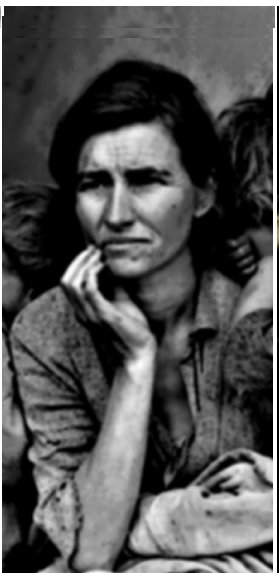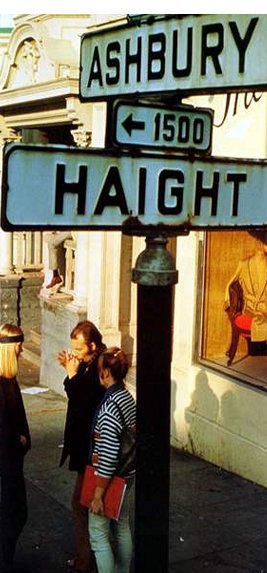
|Home| |Pre-American Settlement| |American Settlement--Civil War| |Late Nineteenth Century|
|Early Twentieth Century| |World War II and the Fifties| |Sixties--Present| |City Histories| |About|









 |
stardom or slavery? Erika Otsuka
Born in 1936, Jeanine Basinger
grew up watching movies produced during the rise of In the late 1800s, silent movies
ruled the world as actors over-dramatized to compensate for the lack of sound.
Television did not exist; thus, people watched musicals on stage or heard them
on the radio. But as sound revolutionized movies, Basinger divides
her book into two sections �V one dedicated to the facts and the other to her
personal opinions�Xand into four parts. In her first part, Basinger
explains the star system, admitting that the words ��movie star�� have never been
clearly defined by the industry. Not all stars follow Like any machine, despite its well
maintenance, the ��well-oiled�� star machine could malfunction even with continued
maintenance; a failure of a product is always possible. 5 But unlike
any other company, which would analyze the reason for failure, the studios
never looked back. The audience keeps looking forward, so when a star fails or
dies, the gears kept turning. However, Basinger
emphasizes only the biggest malfunction: promoting an untalented actor who
succeeds. Being a star required long hours
and no sick days. The primary motive was money. Under a standard seven year
contract, the stars were bound completely to the ��slave system,�� having to
submit to the studio��s desires. 6 Despite the glamorous shell and
regular paycheck, stars ��were really like slaves [whom the studios could] buy
and sell.�� 7 Occasionally though, one star one would fall due to
disobedience or popularity. Tyrone Power was a sex symbol who represented the
machine��s limits. Throughout his career, he starred in many movies that often
times broke box office records, sometimes with female counterparts such as
Loretta Young. But after his service in World War II, Powers returned a changed
man. His lack of zeal showed on screen and his popularity never returned.
However, Lana Turner and Errol Flynn intentionally disobeyed the studios; in
both cases, disobedience led to the court room as the sweet, ideal products
turned sour. Lana Turner allowed her studio to manipulate her and transform her
into a sex symbol, becoming the ��epitome�� of the products by maintaining her
glamour and surviving through the system. 8 Despite her
success, her scandalous private life interfered, leading to humiliation. However,
Turner overcame her star status and became a legend. Unlike other successful
movie stars, Flynn lacked stability and modesty during his career. Off-screen,
he dealt with alcoholism and drugs; he fought and was convicted. Despite his
scandalous lifestyle, Flynn used his versatility to his advantage and starred
in movies such as Captain Blood and various other Westerns. Towards the
1940s, he was accused of raping a minor and was caught in the World War II
craze, forcing him to leave Other stars such as overnight
sensation, Deanna Durbin, had talent but were defective. Along with Judy Garland, Durbin, the ��American
form of Cinderella��, sang her way into audience��s hearts in popular musicals. 9
Because she started her career young, the studios wanted to preserve her youth,
treating her like a child when she was past legal age. Durbin responded by not
only protesting but also by marrying, destroying her image as a minor. Unlike
other movie stars, she was intelligent and possessed some degree of common
sense to notice the system��s subtle manipulation, allowing her to leave the
system. Durbin enjoyed her life after her retirement, an unusual accomplishment
for anybody involved in the scandalous Sometimes, the machine spits out an
odd product that is unlike the others yet still sells. Not all stars can be
glamorous. Somebody has to play the notorious villain, the sleazy con-artist,
the goofy and socially awkward teenager. These are added bonuses, the
��oddities.�� During the 1930s and 1940s, the machine succeeded in arousing
public interest in these actors and took advantage of the fact that many male
stars were fighting in World War II, allowing the introduction of new faces and
new types. It was open to anybody who could connect with the audience. Clifton
Webb was not as strong, handsome, or virile as Tyrone Power, but he played his
parts well, capturing the hearts of audiences everywhere and becoming the star
by ��being the anti-star.�� 10 The Oscar-winning low-class crook,
Wallace Beery was proof of the machine��s abilities. He had a counterpart; for
every successful male star came a female star to
complete him. The opposites of the glamorous Loretta Young and Tyrone Power
couplings, Wallace Beery and Marie Dressler were the
unattractive couple, overweight and very unflattering. They argued, they fought,
they captured attention. Considered the ��younger
version of Beery,�� Mickey Rooney was talented as well. 11 He was too
short, too goofy looking, and too young, but throughout his career, he was
highly successful when co-starring with Judy Garland in musicals and in the two
hit series Andy Hardy and Family Affair. Along with Beery, Rooney
could promote another rising star��s career. Three types of categories existed
in The machine ran unchanged up until
World War II, which changed The machine lasted for about thirty
years and mass produced hundreds of stars daily of which only a few captured
the audience��s hearts. After World War II ended, the views shifted, leading to
a greater focus on the movie and plot rather than the star. It was a slow
change, but by the 1960s, ��glamour was on life support,�� and by the 1970s,
stars controlled the machine. 13 Modern day stars, or ��neo stars,��
have options. They can negotiate, explore other options, and have educational
backup; thus, they are no longer financially dependent on acting. However, the
modern stars are no longer supplied; they must build their own group, complete
with an agent, and sacrifice their privacy to magazines such as Entertainment
Weekly, assuming they can overcome their competition. Because of this
fascination, audiences forget that stars are no longer objects, but humans. The machine, though no longer
functional, is still mysterious. It combines the objective �V business and
publicity�Xwith the subjective �V the audience��s perception�Xand is still
��half-calculated and half-serendipitous�� and unpredictable. 14 Despite her harshness, Basinger respects the stars and the system because it was
successful in star production. Living through World War II, Basinger recognized the influence the war had on In a New York Times book
review, Manohla Dargis
criticizes Basinger for her repetitive structure and
poor editing. Basinger lists 14 Andy Hardy
movies one page, but claims the existence of 16 on another. Dargis,
like Basinger who compares the system to slavery,
believes the star system was a ��cage [with] a gold-plated [and] ermine-lined.�� 17
It caged stars, keeping them wound on a tight clock, controlling their every
move. Though they agree that the system is an ��oligarchic industry,�� Dargis believes that within the stars�� biographies, Basinger lacked historical background about stardom and
hardly emphasized the system��s ��coldblooded
operational reality.�� 18 For example, Meanwhile, William Grimes, also from the New York Times,
calls Basinger ��ingenious,�� praising her for ��cleverly��
chosen examples that illustrated and revealed inefficiencies. While Dargis criticizes Basinger,
Grimes praises Basinger��s ��bouncy, bright style�� and
her ��shrewd�� eye in identifying the system. 19 However, Grimes, like
Dargis, recognizes Basinger��s
biased point of view; however, he appreciates the odd combination, how Basinger can both gush and inform. The Star Machine is rather
repetitive often using two stars as examples when one would suffice. However,
despite being a nonfiction book, it has a personality, unlike many other
history-dominated books; Basinger weaves her personal
experiences and opinions with the actor��s biography and allows her bias to
shine through her blunt diction and judgments. Hollywood produced movies that were shown across the
country, even worldwide. People everywhere watched Lana Turner��s seductive
entrances and the passionate romance between couplings. Audiences everywhere
reacted to these products, expressing their opinions, criticizing the actors��
talent, voice, and looks. Hollywood is in California, but Hollywood did not hit
just California �V it impacted the world. The movies ��manufacture illusions�� and
offered an alternate worlds, lives impossible to create in reality. 20
Movies allowed people with and without talent to reach to audiences outside of
their region. Movies connected the citizens of the United States, giving each
moviegoer a topic of conversation. However, the movies came straight
from Through her analysis and detailed examples of stars, Basinger explains the ��crackpot business[��s]�� function and the techniques it used to produce a successful product; the more successful the products, the more money the film industry made. 22 Just like any product, the star��s popularity was always unknown until after their debut. After introducing themselves to the world, they could only hope they would be treated externally well to compensate for the industry��s lack of respect internally. 1. Basinger, Jeanine. The Star Machine. 2. Jeanine Basinger, 9. 3. Jeanine Basinger, 71. 4. Jeanine Basinger, 74. 5. Jeanine Basinger, 13. 6. Jeanine Basinger, 131. 7. Jeanine Basinger, 131. 8. Jeanine Basinger, 181. 9. Jeanine Basinger, 257. 10. Jeanine Basinger, 425. 11. Jeanine Basinger, 442. 12. Jeanine Basinger, 490. 13. Jeanine Basinger, 523. 14. Jeanine Basinger, 453. 15. Jeanine Basinger, xiii. 16. Jeanine Basinger, 501. 17. Dargis, Manohla. ��Hot Properties.��
The New York Times 18. Dargis, 3. 19. Grimes, William. ��When the Studios
Calls the Shots, and Close-Ups.�� The New York Times.
20. Jeanine Basinger, xiii. 21. Jeanine Basinger, xiv. |